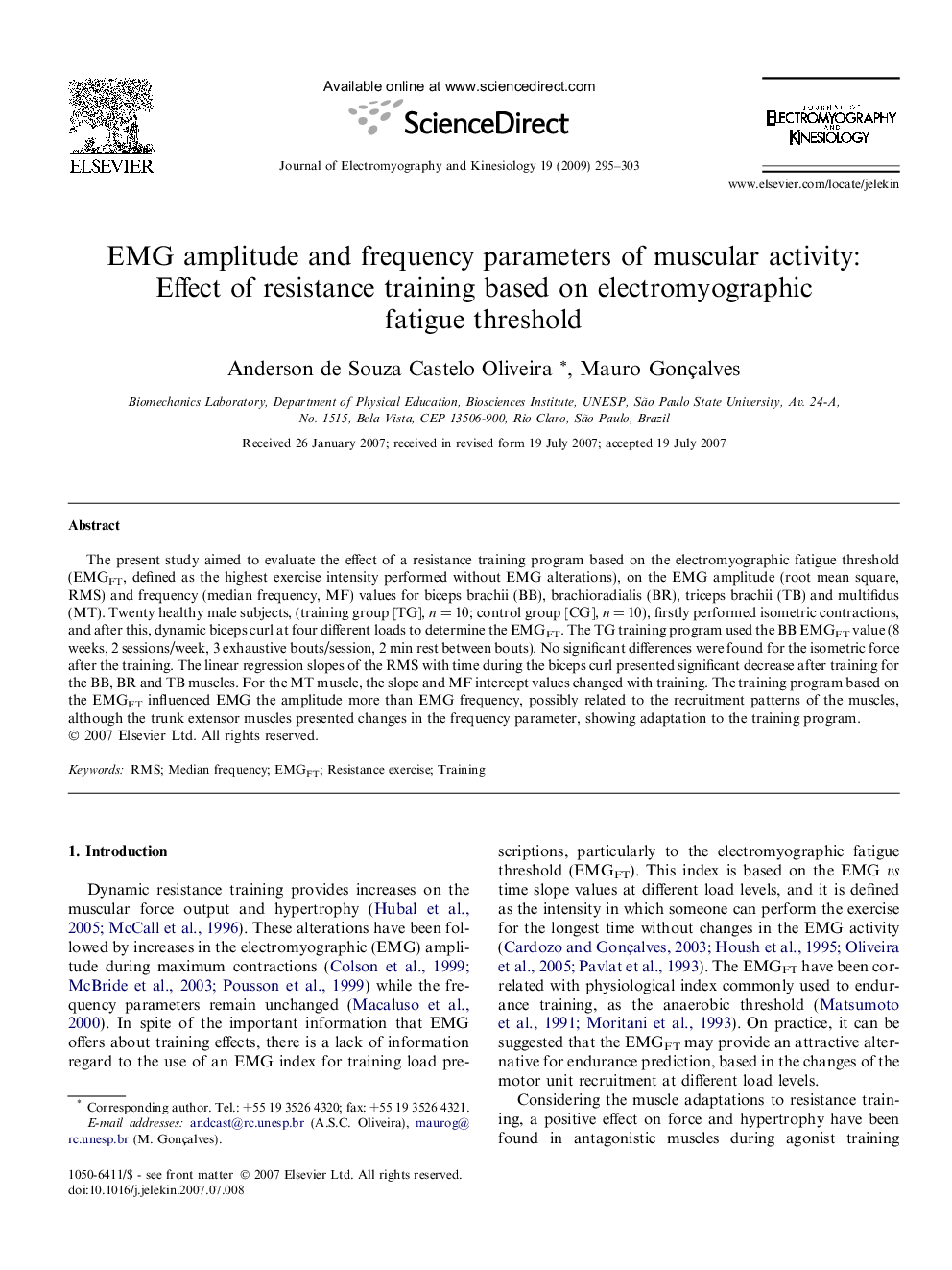| Article ID | Journal | Published Year | Pages | File Type |
|---|---|---|---|---|
| 4065558 | Journal of Electromyography and Kinesiology | 2009 | 9 Pages |
The present study aimed to evaluate the effect of a resistance training program based on the electromyographic fatigue threshold (EMGFT, defined as the highest exercise intensity performed without EMG alterations), on the EMG amplitude (root mean square, RMS) and frequency (median frequency, MF) values for biceps brachii (BB), brachioradialis (BR), triceps brachii (TB) and multifidus (MT). Twenty healthy male subjects, (training group [TG], n = 10; control group [CG], n = 10), firstly performed isometric contractions, and after this, dynamic biceps curl at four different loads to determine the EMGFT. The TG training program used the BB EMGFT value (8 weeks, 2 sessions/week, 3 exhaustive bouts/session, 2 min rest between bouts). No significant differences were found for the isometric force after the training. The linear regression slopes of the RMS with time during the biceps curl presented significant decrease after training for the BB, BR and TB muscles. For the MT muscle, the slope and MF intercept values changed with training. The training program based on the EMGFT influenced EMG the amplitude more than EMG frequency, possibly related to the recruitment patterns of the muscles, although the trunk extensor muscles presented changes in the frequency parameter, showing adaptation to the training program.
